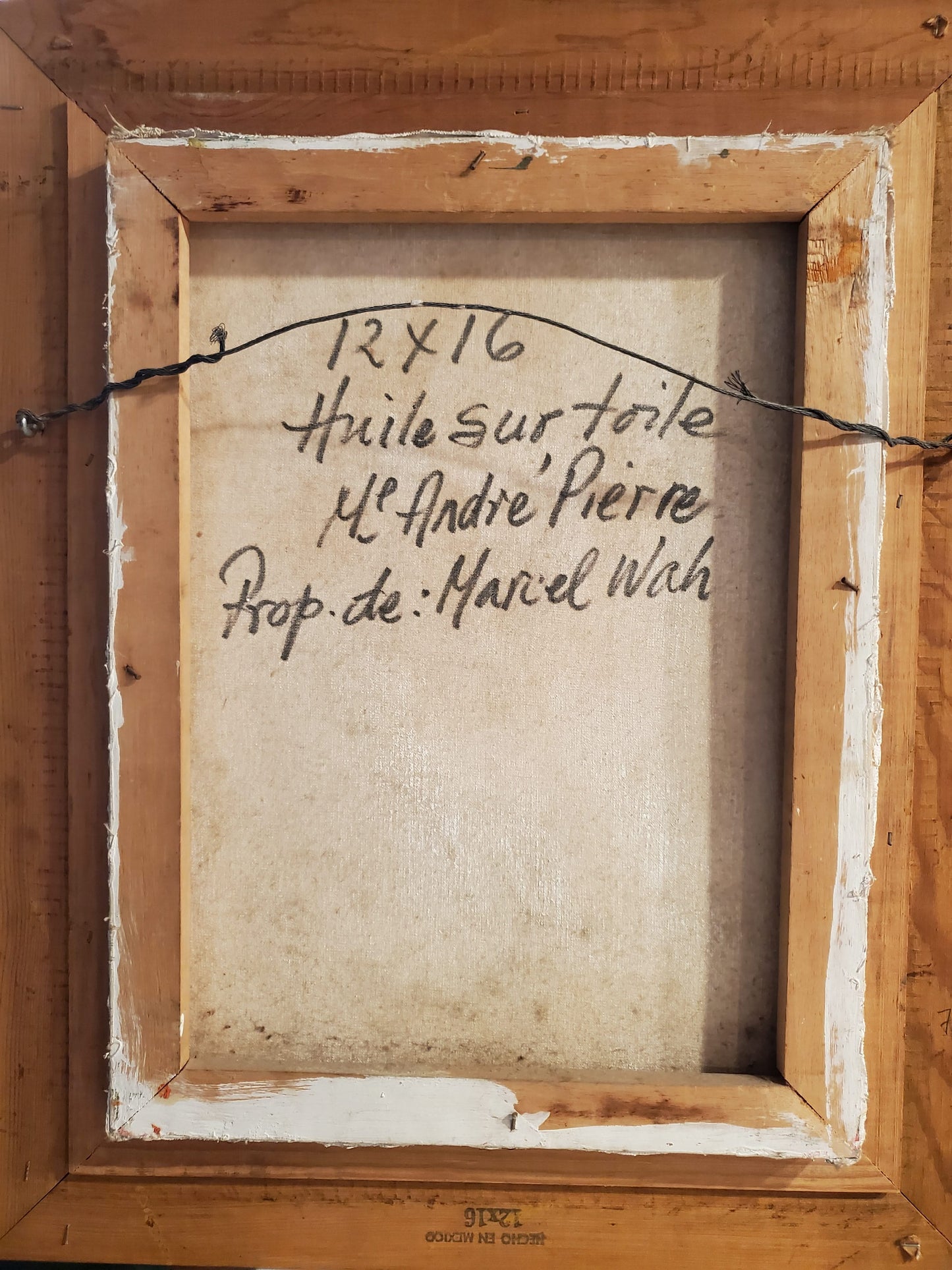1
/
of
2
Andre Pierre (1914-2005) 16"x12" Ogoun Oil on Canvas #1MF
Andre Pierre (1914-2005) 16"x12" Ogoun Oil on Canvas #1MF
ee98cfa8-f212-a714-b578-59d8ba95c152
92d2dc53-1a90-452b-a4ec-9ea65808b399
Regular price
$0.00
Regular price
Sale price
$0.00
Unit price
/
per
Shipping calculated at checkout.
Couldn't load pickup availability
Description
Description
This unique 16"x12" oil on canvas voodoo painting was signed by the late Haitian master Andre Pierre. It is sold framed. Ogun (who is also known as Oggún, Ogoun, Ogum, Gu, or Ogou) is the god of iron, metal, and metalwork. In his various manifestations, he is also a warrior and is associated with war, truth, and justice.
About this artist
About this artist
André Pierre was born in Port-au-Prince, Haiti, in 1915 and died in 2005. He joined the Centre d'Art in 1949. He was a voodoo priest "houngan" and a religious painter; his art documents the Haitian religion. Almost all his paintings depict the characteristic appearances of African spirits. His first paintings were done inside the hollowed gourds used to contain the blood of sacrificed animals or offerings to the spirits, the "loas," and he later began painting on board and canvas. He often wrote in his paintings to identify the spirits and their activities.
Significant parts of his life work have been the decoration of "hounfors," or voudou temples, some of which have been lost forever in various episodes of "dechoukage, or the uprooting violence which is a part of the pattern of Haitian history. But most his works on canvas and panels survive, leaving us a precious history of the art of this "old master" of Haitian art. His art is in the permanent collection of the Figge Art Museum in Davenport, Iowa; the Milwaukee Museum of Art; the Ramapo College of New Jersey; and the Wadsworth Atheneum in Connecticut. André Pierre is considered as one of Haiti's greatest painters. Selden Rodman, in his excellent work 'Where Art Is Joy: Haitian Art - The First Forty Years,' says: "Gérard Valcin and Wilmino Domond, next to André Pierre himself, were the dominant figures of the second generation." Serious collectors of Haitian art treasure his paintings. Pierre's art has been documented in major books on naive and religious art.
Andre Pierre injects rhythms into his works through lines and colors, says the art critic and author Gérald Alexis in Peintres Haitiens.


ee98cfa8-f212-a714-b578-59d8ba95c152
92d2dc53-1a90-452b-a4ec-9ea65808b399










